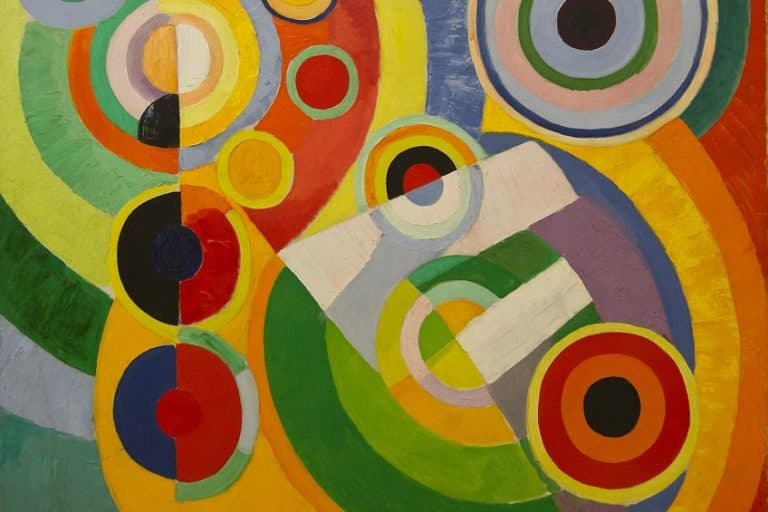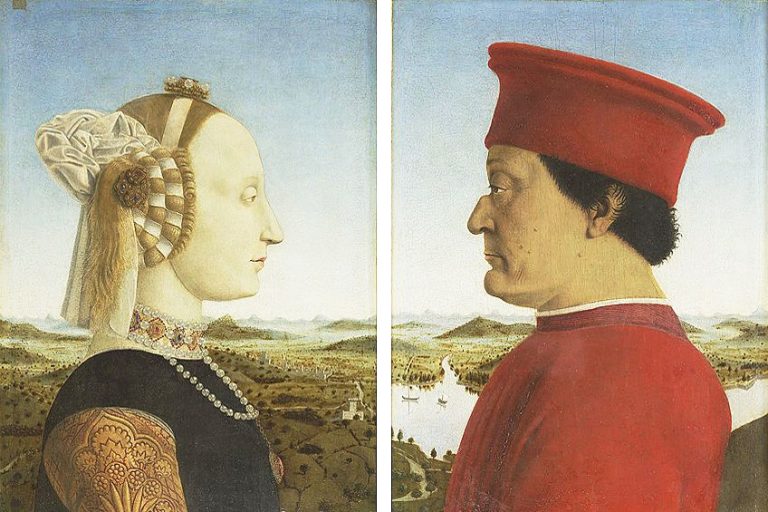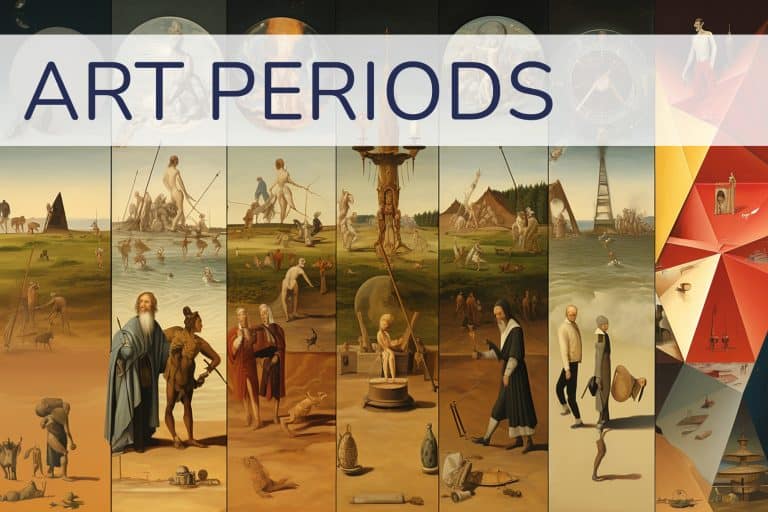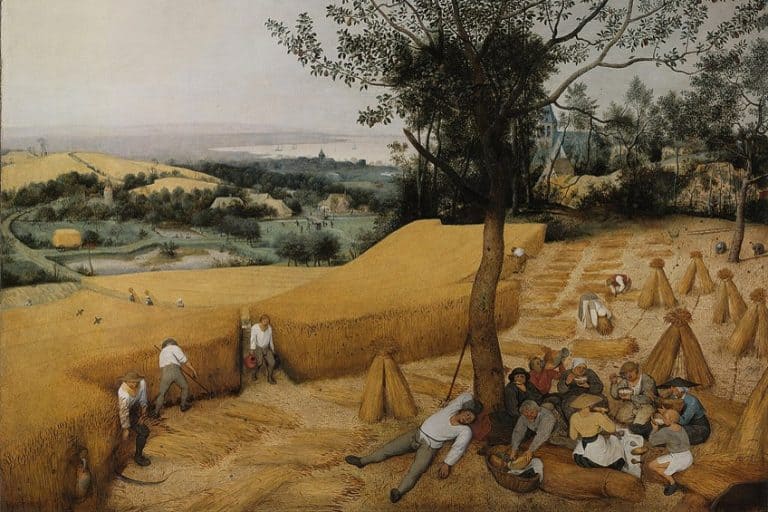What Is New Media Art? – The Role of Technology in Modern Art
What is new media art, and what are a few new media art examples? Any artwork created or generated using electronic media technology is considered new media art. Examples of new media art include computer graphics, virtual art, digital art, computer animation, sound art, interactive art, video games, internet art, 3D printing, and cyborg art. Below, we will be exploring the world of new media art and new media artists, and the role of this art form in the modern world.
What Is New Media Art?
New Media art has its roots in art, science, and performance. Social and political action, databases, feminism, Afrofuturism, and identity are all prevalent topics in new media art, and the inclusion of modern technology into the artwork is a recurring motif. A strong focus on the medium is a distinguishing aspect of most modern work, and many major universities and art schools now offer majors in “new media”, as well as an increasing number of graduate programs throughout the world. As with performance art, new media art may incorporate a certain amount of interaction between the viewer and the art piece, or between the audience and the artist.

However, as various curators and theorists have pointed out, such interactions, engagement, and transformation do not differentiate new media art, instead they establish a common ground with parallel practices in other aspects of contemporary art. These insights emphasize the types of cultural practices that emerge alongside growing technology platforms and call into question how much emphasis is placed on technological media in general. Complex preservation and curation practices in new media art make gathering, installing, and showing the works more difficult than in most other mediums. To meet the advanced demands of new media art, many cultural centers and museums have been developed.
The History of New Media Art
The inception of new media art may be dated back to 19th-century moving picture technologies such as the praxinoscope, phenakistiscope, and zoopraxiscope. Between the 1900s and the 1960s, many kinds of light and kinetic art were created that could be considered forerunners of new media art. According to Steve Dixon, the early 20th-century avant-garde art movement Futurism was the result of the fusion of performance art and technology. Dancers Valentine de Saint-Point and Loe Fuller were early instances of performance artists who explored the potential of then-state-of-the-art film, lighting, and projection. In 1914, Winsor McCay, the cartoonist, went on tour with Gertie the Dinosaur, an animated character.
Many Cabaret artists started adding film projection into their shows during the 1920s. Broadcast (1959), by Robert Rauschenberg, is regarded as one of the first known examples of interactive art.
It consists of a painting and three interactive radios. In his piece TV De-collages (1958), Wolf Vostell, a German artist, dabbled with television sets. Nam June Paik was impressed by Vostell’s artwork, which included hundreds of TV’s that exhibited abstract and distorted video. Starting in the 1970s in Chicago, there was a rush of artists working with video art and merging cutting-edge computer technology with conventional mediums like photography, sculpture, and graphic design. Many of the participants were graduate students at Chicago’s School of the Art Institute, such as Lyn Blumenthal and Kate Horsfield.
Donna Cox teamed up with Ray Idaszak, a computer scientist, and George Francis, a mathematician, on the project Venus in Time, which displayed mathematical data as 3D digital sculptures designated by their resemblance to paleolithic Venus statues. The rise of new and diverse forms of interactive art by Lynn Hershman Leeson, Ken Feingold, Ken Rinaldo, David Rokeby, Tamas Waliczky, and Perry Hoberman was facilitated by the emergence of computer graphics in the 1980s and real-time technologies in the 1990s, as well as the proliferation of the Internet.

At the same time, breakthroughs in science have enabled artists such as Eduardo Kac to start exploring genetics and DNA as a new art medium. Theories established around hypertext, interactivity, databases, and networks have had an impact on new media art. Theodor Nelson and Vannevar Bush were influential philosophers in this area, and similar themes may be found in the works of Italo Calvino, Jorge Luis Borges, and Julio Cortázar.
Prevalent Themes in New Media Art
Collaboration, computer art, appropriation, identification, telepresence, open source, corporate parody, surveillance, and hacktivism are among the issues addressed by modern new media art, according to Reena Jana and Mark Tribe. According to Maurizio Bolognini, new media artists share a similar denominator: a self-referential interaction with technological advances, the outcome of finding oneself within an epoch-making transition governed by technical advancement.
There are considerable contrasts between activist artists, scientist-artists, and technology artists who are connected to the art system, and who not only have different technocultures and training but also produce different works.
This should be considered while studying the many subjects addressed by new media art. Non-linearity can be considered a significant subject in this field by new media artists creating interactive, generative, collaborative, and immersive artworks, such as Maurice Benayoun and Jeffrey Shaw, who studied the term as a way of examining various forms of digital projects where the material relies on the user’s experience. This is an important topic since individuals have been conditioned to see things in a linear and clear-cut manner. Art is now breaking out from that mold and enabling people to create their own experiences with the artwork.
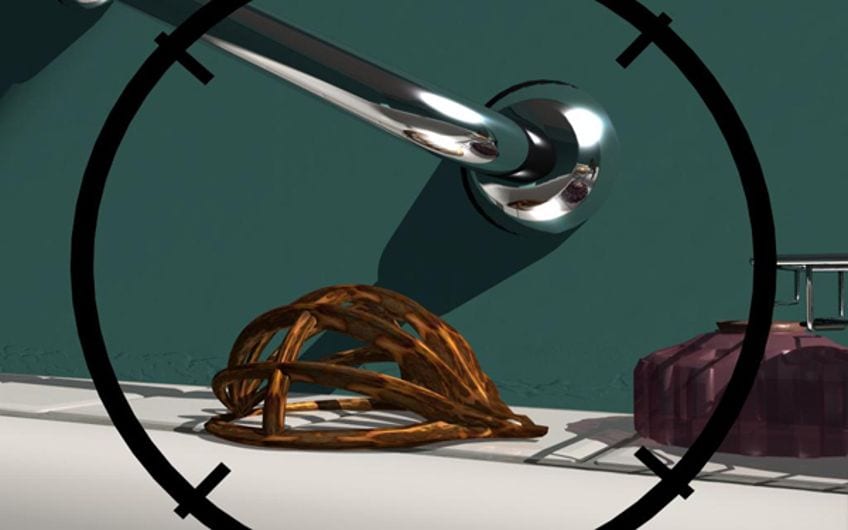
Non-linearity refers to a project that deviates from the traditional linear narrative seen in plays, books, and movies. Non-linear art typically necessitates audience interaction or, at the least, the notion that the “visitor” is taken into account by the representation, causing the exhibited content to change. The interactive aspect of new media art, which has become crucial for certain artists, originated from the Happenings of Allan Kaprow and has become a vital aspect of contemporary art in the internet era. The internet’s interconnectedness and interactivity, as well as the battle between corporate interests, public interests, and political interests that gave rise to the web today, inspire much of today’s new media art.
Databases
Creating visual representations of databases is a significant subject in new media art. Martin Wattenberg, Lisa Strausfeld, and Alberto Frigo are among the pioneers in this field. From 2004 through 2014, George Legrady’s work Making Visible the Invisible displays on six LCD monitors behind the circulation counter the typically unseen library information of items recently signed out at the Seattle Public Library.
Database aesthetics appeals to new media artists for at least two reasons: formally, as a fresh variant on non-linear storytelling, and strategically, as a method to disrupt what is quickly becoming a form of authority and control.
Afrofuturism
Afrofuturism is an integrative genre that deconstructs the African diaspora experience, mostly in America, and imagines the future using science fiction, technology, and fantasy themes. Sun Ra, considered one of the pioneers of Afrofuturism, felt that combining music and technology might help humanity overcome social ills. The Sun Ra Arkestra, his band, fused conventional jazz with performance art, and they were among the first musicians to use a synthesizer in their performances. Afrofuturism aesthetics and themes have witnessed a renaissance in the 21st century, thanks to artists and collaborations such as Black Quantum Futurism and Jessi Jumanji, as well as art educational centers such as Black Space in Durham, North Carolina.

Feminism
Wave UFO (1999 – 2003), a multimedia installation project by Japanese artist Mariko Mori, strove to investigate the science and perspectives behind the study of neuroscience and consciousness. Investigating how these areas conduct research in a substantially reductionist approach, Mori’s work emphasized the importance of these professions becoming more holistic and incorporating ideas and perspectives from the humanities and philosophy. The immersive video installation Pour Your Body Out (2008) by Swiss artist Pipilotti Rist examines the contradiction of beauty and ugliness in nature and its relationship to the feminine experience.
The large-scale 360-degree exhibit included circular pink cushions and breast-shaped projectors, inviting visitors to unwind and immerse themselves in the brilliant colors, psychedelic music, and yoga and meditation.
Lynn Hersman Leeson, an American artist, and filmmaker, addresses the issues of technology, identity, and the elimination of the contributions and roles of women to technology in her works. Her film Conceiving Ada (1999) follows Emmy, a new media artist and computer scientist, as she strives and succeeds in developing a mechanism to speak with Ada Lovelace, an Englishwoman who wrote the first computer program in the 1840s using artificial intelligence.
The Longevity of New Media Art
As the tools used to distribute works of new media art, such as cassettes, film, software, web browsers, and operating systems, become outmoded, the difficulty of preserving artwork beyond the period of its contemporary production becomes more pressing. Currently, new media art preservation research initiatives are being carried out in order to better the documentation and preservation of the endangered media arts heritage. There are preservation methods available, such as translating a work from an old medium into a similar new medium, digital archiving of material, and the application of emulators to preserve works that are dependent on older operating systems or software.
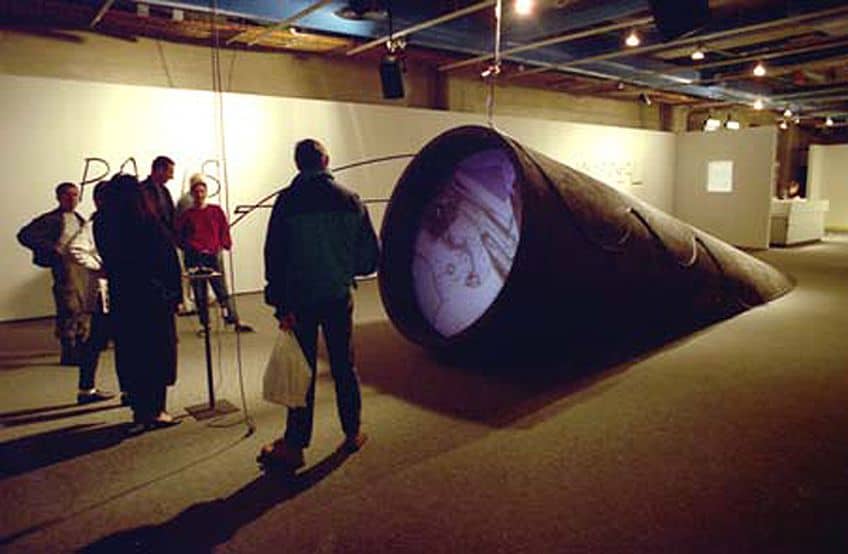
The challenge of archiving works in digital form became a concern in the mid-1990s. Moving visuals, interactive programs, multimedia, and computer-generated art are examples of digital art that differ from tangible artwork such as sculptures and oil paintings. In contrast to analog technology, a digital file may be recopied onto a new media without any loss of information. One of the issues with conserving digital art is that digital formats change all the time. As data is increasingly stored in the cloud storage, USB devices, and portable hard drives will become obsolete.
Galleries and museums thrive when they can handle the display and preservation of real artwork.
When it involves collection, documentation, and preservation, new media art threatens the traditional techniques of the art industry. As technology advances, the character and structure of art organizations and institutions will be jeopardized. The conventional roles of artists and curators are constantly shifting, necessitating a transition to new collaborative modes of production and display.
Education
Students in new media programs can become acquainted with the most recent means of creativity and communication. Students of new media learn to recognize what is and isn’t “new” about various technologies. Science and the marketplace will continually provide designers and artists with new platforms and tools. Students learn how to filter through new developing technology platforms and contextualize them in the framework of communication, sensation, consumption, and production. Students pursuing a bachelor’s degree in New Media will mostly work through practice in creating experiences that use new and old technology as well as storytelling. They gain technical skills, exercise analysis, and critique, and get acquainted with historical and up-to-date precedents through creating projects in varied mediums.
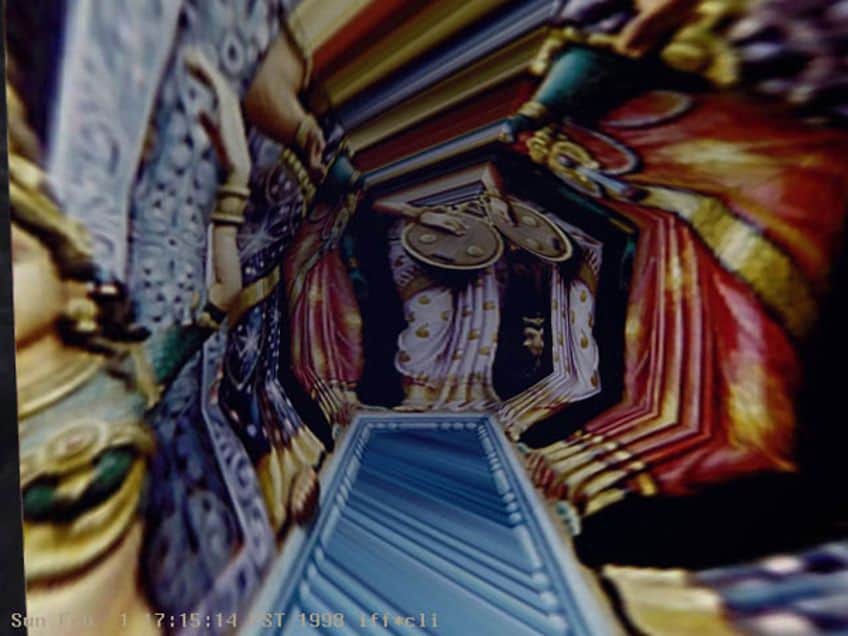
Notable New Media Artists
As new technology advanced at a rapid rate, new media art started to appear in the mid-20th century. With the rise of the internet in the 1990s, there was a significant explosion of new media artworks. The internet also offered an outlet for new media artists to connect with previously unattainable audiences.
Let us find out more about a few notable new media artists below.
Vera Frenkel (1938 – Present)
| Artist | Vera Frenkel |
| Nationality | Canadian |
| Date of Birth | 10 November 1938 |
| Place of Birth | Bratislava, Slovakia |
| Famous Artworks | Window View with Paths (1972) Untitled (1994) |
Vera Frenkel is a multimedia artist who has examined the experience and complexities of forced exile, migration, and diaspora in her work. This Canadian artist creates works about global migration through performance, film, and interactive installation art. Despite her European heritage, she was reared in North America, where moral convictions differ from that of Europe. Her works are concerned with the representation of history and memory, as well as the misuse of political authority and the repercussions that follow.
She develops a historiographic discourse from a palimpsest of recollections and rumors which, unlike scholarship, goes beyond reality and design and overlays historical imagery with other images. Body Missing, a video installation, is one of her most renowned projects, dealing with the Nazis’ intended “Führer Museum” in Linz and what became of the works collected for it.
Frenkel addresses the unexplained location of these pieces inside a fictitious narrative centered on a bar by connecting historical elements and factual evidence.
Jeffrey Shaw (1944 – Present)
| Artist | Jeffrey Shaw |
| Nationality | Australian |
| Date of Birth | 23 October 1944 |
| Place of Birth | Melbourne, Australia |
| Famous Artworks | Zooming Sydney (2017) Latent Embeddings (2020) |
Jeffrey Shaw is a visual artist who is well-known for his contributions to new media art. He has set the standard for the innovative application of digital media technologies in the realms of interactive art, expanded cinema, augmented, virtual, and mixed reality, navigable cinematic systems, immersive visualization environments, and interactive narrative in an impressive body of critically acclaimed works.
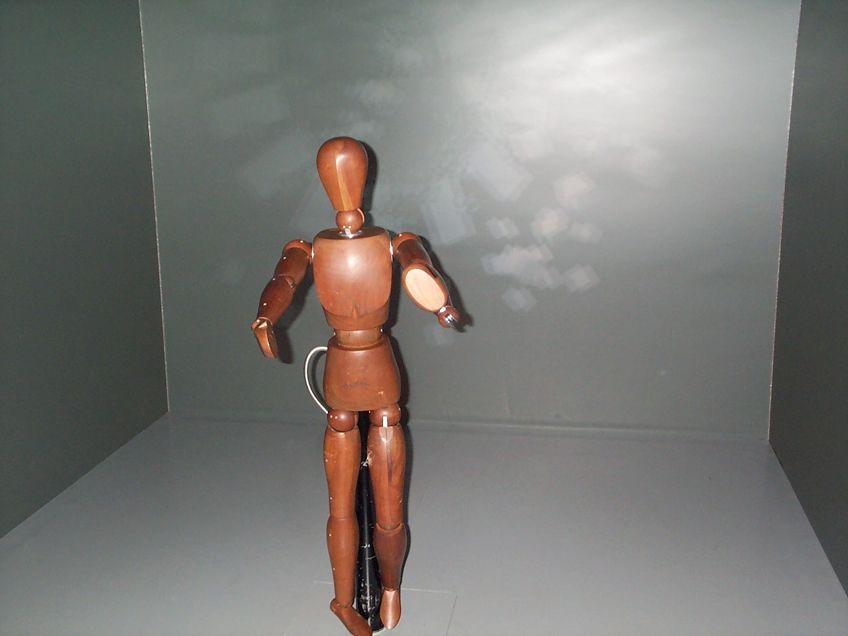
Shaw was a co-creator of Algie the inflatable pig, which was shot for Pink Floyd’s Animals album atop Battersea Power Station in 1977. For the following 11 years, he developed and supervised a groundbreaking creative production, research, and exhibition program at the ZKM that featured residencies and the development of new works by several of his generation’s most prominent media artists.
He is definitely an artist to keep an eye out for if you are interested in new media art.
Maurice Benayoun (1957 – Present)
| Artist | Maurice Benayoun |
| Nationality | Algerian |
| Date of Birth | 29 March 1957 |
| Place of Birth | Mascara, Algeria |
| Famous Artworks | Quarxs (1991) Tunnel under the Atlantic (1995) |
Maurice Benayoun is a French avant-garde artist and curator living in Hong Kong and Paris. His work incorporates a wide range of media, such as computer graphics, video, the Internet, immersive virtual reality, large-scale urban media art projects, 3D printing, and interactive exhibitions. Maurice Benayoun’s work, which is typically conceptual, is a critical examination of the mutations in modern society caused by developing or recently accepted technology.
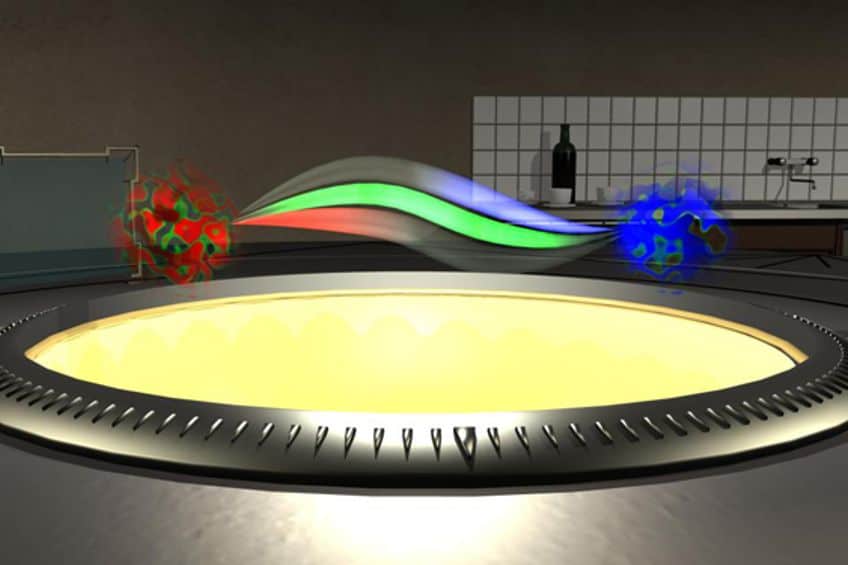
Benayoun made short films and video installations on contemporary artists such as Jean Tinguely, Daniel Buren, and Martial Raysse in the 1980s. To fund his education, he got a job as a secondary school teacher of literature and fine arts in 1978. Benayoun earned his bachelor’s degree in Fine Arts in the early 1980s, while also teaching full-time.
In 1982, he received the Aggregation d’Arts Plastiques, a very prestigious degree in the French education system that led to a tenure position and opened the door to teaching at universities.
Alexei Shulgin (1963 – Present)
| Artist | Alexei Shulgin |
| Nationality | Russian |
| Date of Birth | b. 1963 |
| Place of Birth | Moscow, Russia |
| Famous Artworks | Form Art (2007) Screenshot of Alexei Shulgin (2017) |
Alexei Shulgin is a modern musician, artist, and web curator of Russian origin. Shulgin founded the Immediate Photography Group in Helsinki and Moscow in 1988, launching his career in this field.

After 1990, he changed his focus from photography to the Internet, and in 1994, he formed Moscow-WWW-Art-Lab with several artists from Slovenia and London. He is a member of the readme culture and utilizes code as a kind of art. He is particularly interested in internet art and software art.
Shulgin and his software program have performed live in a variety of venues throughout the world, including the San Diego-Mexico border, with the artist on one side and his computer on the other.
Petra Cortright (1986 – Present)
| Artist | Petra Cortright |
| Nationality | American |
| Date of Birth | 19 July 1986 |
| Place of Birth | Santa Barbara, California, United States |
| Famous Artworks | ERNEST HEMINGWAY_exotic houseplants+FEMME NIKITA (2019) Panstwowyurzadnadzoruubezpieczen.pl_PORTP BELLO_pretty women (2021) |
Petra Cortright is a multidisciplinary artist noted for her participation in the “Net-Art” movement – an artistic movement that employs the Internet as its major source – as well as a “post-Internet artist”, or member of the group of artists that came after the Net-Art pioneers. Cortright has created a suite of new pieces that she describes as “domestic landscapes” for her debut show at Danziger Gallery. Subtly or unconsciously reflecting two renowned female painters – Agnes Martin for the grids that serve as the framework for Cortright’s layering, and Joan Mitchell for the colorful and aggressive brushstrokes that comprise the fundamental features of each piece. Cortright’s artworks address the digital world in new and innovative ways, as she has done for over 10 years.

She makes each one-of-a-kind sculpture by downloading photographs from the internet, importing them into Photoshop, and then altering, extending, and carving them. She creates her own symbols and markings using digital paintbrushes and combines them with modified and appropriated imagery. She then continually edits her files, adding and removing colors, layers, and forms until they reach the critical point. The pieces in this exhibition are among the first to interact with the grid, a visual framework that is central to much modern art as well as an organizing basis for the web. The forms and brushstrokes of Cortright’s pieces wander in front of and behind the predefined grid, following and disturbing its order.
That completes our exploration of new media artists and art. Like any other practice, art evolves with time and creates new forms. Artists and technology are increasingly pushing the limits of what is known and redefining what is achievable. Pencils have been replaced with digital pens, and fingers can produce the most beautiful artwork without ever coming into contact with paint or paper. Digital technology is reshaping artistic practices and our perceptions of creativity.
Frequently Asked Questions
What Is New Media Art?
New Media art refers to a broad category of modern artworks that incorporate new technology such as virtual reality, computer animation, and the internet world. New media art is inextricably linked to contemporary digital art, and it may be considered a mix of the two. It refers to any form of modern art made, altered, or transmitted using new media technologies. This covers works developed utilizing video games, computer animation, biotechnology, robotics, and 3D printing, as well as digital art forms. As the medium evolves as new media technologies are developed and explored by artists, new media art defies categorization.
Who Are the Most Well-Known New Media Artists?
As this medium continues to develop, there are many new media artists that have emerged. This includes renowned new media artists such as Vera Frenkel, Jeffrey Shaw, Maurice Benayoun, Alexei Shulgin, and Petra Cortright. Individuals such as these continue to push the boundaries of what is possible.
Isabella studied at the University of Cape Town in South Africa and graduated with a Bachelor of Arts majoring in English Literature & Language and Psychology. Throughout her undergraduate years, she took Art History as an additional subject and absolutely loved it. Building on from her art history knowledge that began in high school, art has always been a particular area of fascination for her. From learning about artworks previously unknown to her, or sharpening her existing understanding of specific works, the ability to continue learning within this interesting sphere excites her greatly.
Her focal points of interest in art history encompass profiling specific artists and art movements, as it is these areas where she is able to really dig deep into the rich narrative of the art world. Additionally, she particularly enjoys exploring the different artistic styles of the 20th century, as well as the important impact that female artists have had on the development of art history.
Learn more about Isabella Meyer and the Art in Context Team.
Cite this Article
Isabella, Meyer, “What Is New Media Art? – The Role of Technology in Modern Art.” Art in Context. August 30, 2023. URL: https://artincontext.org/what-is-new-media-art/
Meyer, I. (2023, 30 August). What Is New Media Art? – The Role of Technology in Modern Art. Art in Context. https://artincontext.org/what-is-new-media-art/
Meyer, Isabella. “What Is New Media Art? – The Role of Technology in Modern Art.” Art in Context, August 30, 2023. https://artincontext.org/what-is-new-media-art/.




